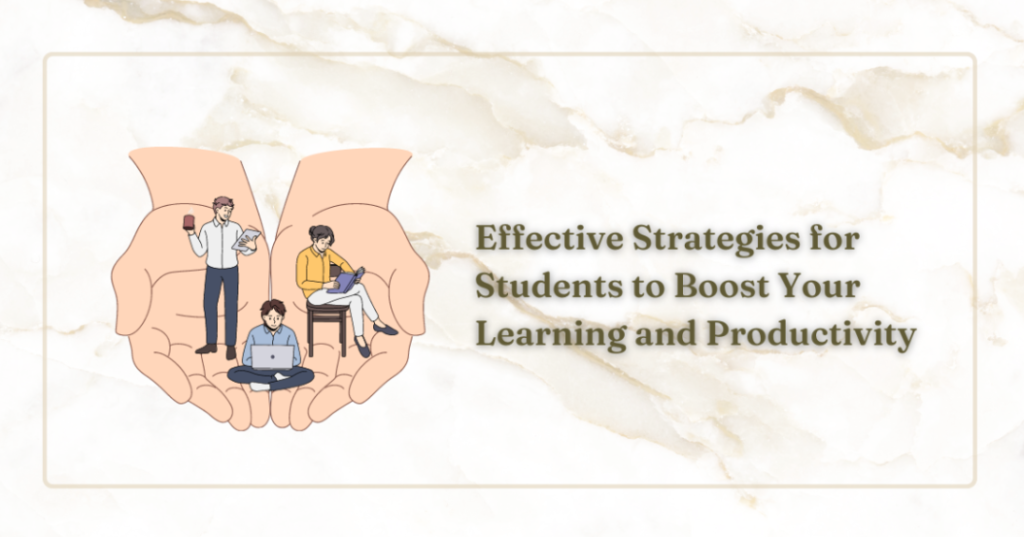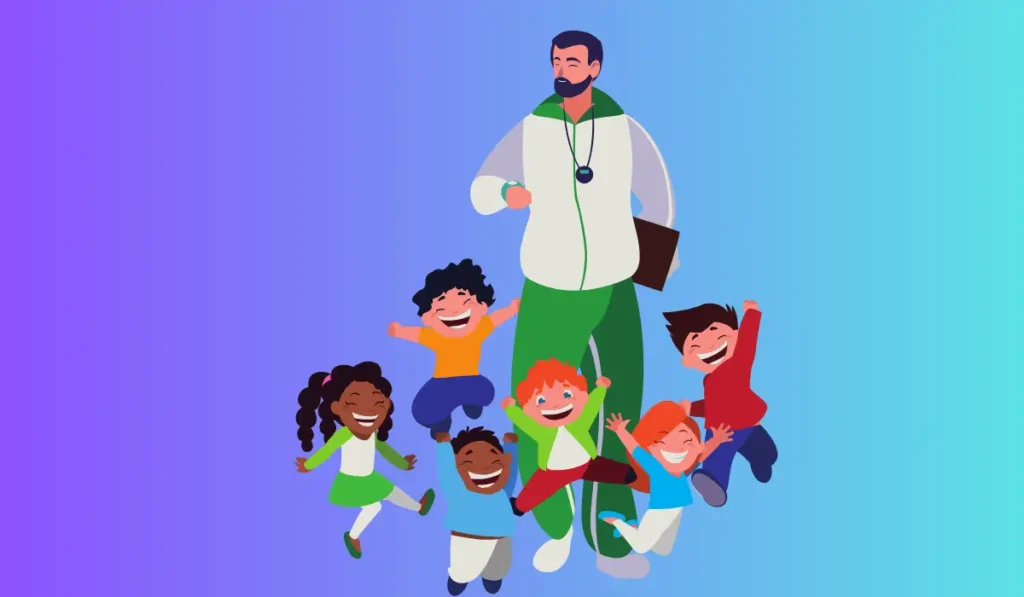According to the Rescue Time report compiled in 2019, students spend only about 44% of their study time on actual academic work. Distractions, such as emails, social media platforms, and other online activities, consume the rest of the time.
Isn’t it a very high level of distraction? Yes, it is. After all, 66% of the student’s time is not being utilized for learning and academic development, which they should reach their full academic potential.
So, what is the solution? Well, there are time management and effective study techniques students can opt for to get the most out of their time and improve their overall learning and productivity. Here are those techniques!
Create a Conducive Study Environment
Your learning environment matters a lot; it influences the amount of information you can encode, store, and retrieve. Therefore, create an environment that helps you focus and learn at your best. If you don’t know how to create one, here are some tips:
Choose the Right Study Space—Select a quiet, well-lit, and organized space to study. Make it free from distractions to focus and establish a proper study routine.
Minimize Distractions—Keep your phone away from you if it is not needed. If needed, turn off notifications and limit social media use. If there are other kinds of noise distractions, such as from your surroundings, find ways to reduce them. Additionally, students can use social media management tools to limit unnecessary distractions from social media platforms. These tools help schedule and manage content, ensuring that social media time doesn’t interfere with academic responsibilities.
Essential Tools—When preparing to study, have all the necessary materials with you, such as textbooks, notebooks, pens, and electronic devices.
Try to Actively Learn Things
Instead of passively reading study materials to absorb information, students learn more when they directly participate in the learning process, which is called active learning.
The following are the most notable active learning techniques you can go for:
Group/Classroom Discussion
Whether it is a classroom discussion led by the instructor or a group discussion by the students, this technique is best to clarify doubts.
The concept is simple: discuss concepts with peers, explain your understanding, and learn from others’ perspectives.
Here are some tips and tricks for effective group discussion:
- Always prioritize having a peer in your discussion
- Schedule your meeting properly and share and assign the topics to the students they are good at
- Create a social media study group to share later progress, notes, and data
Take Proper Notes
The process of active learning starts in the classroom with effective note-taking. Notes are like reference points that help you navigate the revision phase smoothly.
So, when you’re engaging in lectures or discussions, carefully listen and summarize key points. Write down your findings in a clear, concise, and well-structured manner.
If you’re in a hurry, take a photo from the classroom board and use it as notes later. You can even convert your notes into digital text with the help of Imagetotext.info. Paste your image with handwritten text, and it will convert it into editable text.
Remember to share your notes with other students, and if you miss a class, ask for theirs. Notetaking not only acts as a practice section during class but also as a study plan for later.
Practice What You Learn
There is a famous quote: “Practice makes a man perfect” that applies to everybody.
As a student, you have to practice what you have learned in the classroom, from your peers, or through group discussions. Solve the problems or quizzes that involve tackling complex questions or challenges that require the application of learned concepts.
For example, solve math exercises or case studies. And in case you get stuck at some point, work with others to solve problems, which can provide new insights and approaches.
Time Management
For maximum productivity as a student, the first and most important thing is proper time management. After all, you won’t like to be one of 61% of the people who waste 30 minutes to 1 hour daily of their working time doing nothing.
If so, the following is the time to manage your time effectively:
Prioritize Tasks
Find out the tasks that are most important for you based on deadlines, importance, and potential impact. Once identified, break down larger ones into small, manageable steps. So, effective task management can help you stay on track and ensure you’re focusing on what matters most.
Example: Suppose you’re writing a “10-page paper”? Instead of considering one task as a whole, break it down into sub-tasks, like ‘research’, create an outline’, ‘write section 1’, etc. Doing so makes it easy to complete the assignment.
Create a Schedule
Next, create a daily or weekly schedule for particular tasks and delegate specific time blocks to different activities. Estimate the time each task well require. Also, add the time you’ll spend on breaks to do the chores other than academics.
Example: If the ‘research’ process takes you 4 hours and you take a 10-minute break after every hour of work, assign this part at least 5 hours to be completed. Repeat the same scheduling process for each task involved.
Use Pomodoro Technique
The Pomodoro Technique is one of the best ways to manage time effectively. It involves working for 25 minutes straight with deep focus and then taking a short break of 5-7 minutes. This technique also helps maximize focus during working time slots.
Use Technology Wisely
Nowadays, there is no single field around the globe that isn’t using some kind of technology, and the education sector is no exception.
Technology is a must-have for students when it comes to maximum learning and productivity. If you use it correctly, you can speed up the process of doing anything, whether researching, writing, learning, and the list goes on.
Here are some ways you can use technology to improve learning:
- Online Courses and Resources—Use platforms like Coursera, edX, and Khan Academy to access various courses on various subjects.
- Research and Information Gathering—Use ChatGPT, Google Gemini, and other generative AI tools to research your assignment and gather relevant data.
- Virtual Collaboration—Tools like Google Docs and Zoom make it easy to be involved in group projects and discussions.
- Language Learning Apps—These apps allow the global audience to learn languages and interact with the study materials provided in other languages.
In addition, there are digital textbooks and note-taking apps that can be used for efficient note generation. Take Onlinenotepad.io as an example. Whether you’re sitting in a classroom or in a group discussion with a laptop, use it to type down your notes.
Additionally, instead of carrying books with you, have a digital notebook, tablet, or laptop with you and use them to access their soft copies. No burden on your shoulders!
Maintain a Healthy Lifestyle
Health plays a key role in helping students perform well in their studies. After all, they can only focus when they are healthy. Therefore, students should balance their studies with good well-being to perform well in the long run.
For this, students should exercise for at least 30 minutes, such as jumping on a kids trampoline, and sleep for 7-9 hours per night. They should also eat nutrient-rich foods such as fruits, vegetables, whole grains, lean proteins, and healthy fats and avoid too much fast food.
Conclusion
The first thing students can do to improve learning and productivity is manage their time properly. For this, prioritize tasks and break them into smaller steps. Create a daily or weekly schedule to take regular breaks for maximum focus.
Secondly, engage in active learning. Take clear, well-organized notes, participate in group discussions, and complete practice tests. Also, use technology wisely, such as online courses, research tools, and note-taking apps.
Create a quiet, study-friendly environment with all necessary study materials but no distractions. Students should also maintain a healthy lifestyle.


